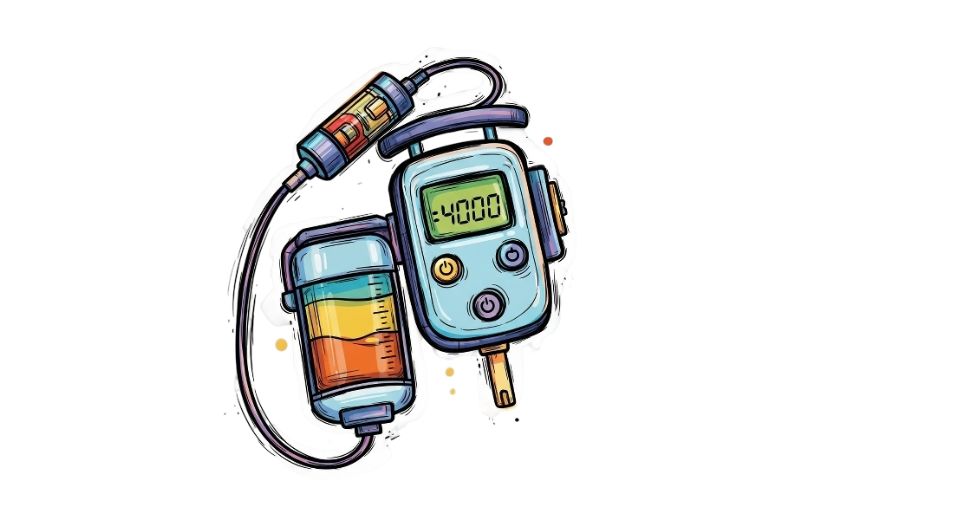
Jul 09, 2025

The newly released research report by Metastat Insight explores the Global Insulin Pumps Market with a careful eye on the driving changes that are silently remoulding the terrain. The report sweeps a broad vision across several geographies, business strategies, and device innovations, attempting to capture the subtle nature of an evolving industry. This is not a superficial summary but, instead, an informed consideration of the present positioning of insulin pump technologies and the market dynamics that are shaping their trajectory. Through different healthcare systems globally, the methods of insulin delivery have witnessed extensive improvements.
The move toward more minimalist, wearable technology has not simply addressed patient demands it has changed the way that patients and practitioners interact with each other in managing diabetes. In the Global Insulin Pumps Market, there is a clear trend toward greater user experience and more subtle functionality. It's no longer just about delivery efficiency; the focus has now moved toward compatibility with digital ecosystems and customization. What was once quite a static solution is now being adjusted to meet a range of user lifestyles and medical needs. Metastat Insight's new report to the field picks up on those nuanced changes, highlighting manufacturer concerns and strategic changes short of speculation. The study avoids overextending and instead presents facts that address actual market practices.
Clinicians' view is that the evolution toward more user-friendly interfaces for insulin pumps is an effort to reduce human error while at the same time making users more capable of controlling the condition to a greater degree. This technical advancement reverberates across the wider Global Insulin Pumps Market, within which demand is increasingly driven by requirements around usability and support infrastructure. This market does not exist in a vacuum. It is driven by reforms in procurement policy, reimbursement arrangements, and regulatory expectations. The research content clearly indicates that institutional adoption plays a formative role in influencing availability and channel distribution.
Hospitals, clinics, and standalone healthcare providers are all part of commercial positioning for these devices. Perhaps the more nuanced finding from Metastat Insight's research is an appreciation of how regional differences impact not only availability but also patient outcomes. It is typically in markets with more formalized healthcare delivery systems that higher levels of adoption of more advanced devices are seen, thus supporting increased investment in those areas. In this larger context, the Global Insulin Pumps Market is also being driven by more and more collaborative partnerships between the technology industry and the more conventional medical device industry. Although so much is frequently made of innovation, the ground-level reality is that the day-to-day usability compatibility between devices and supporting platforms is what frequently animates user uptake. This type of collaboration is not opportunistic but rather based on a vision for integrated pathways of care over the long term. These sorts of initiatives signal a future where devices are not just expected to perform but also communicate, foretell, and learn.
There is also increasingly shared awareness among stakeholders regarding the wider implications of device accessibility. While pricing models are not an object of this analysis, they ultimately determine purchasing choices at institutional and individual levels. What the Global Insulin Pumps Market research reveals is that sustainability is as much usability and customer care as it is initial investment. Those companies that provide training, user assistance, and on-the-fly troubleshooting are increasingly considered partners, not just suppliers. The maturity of the market in some geographies comes with a new agenda.
With increasingly educated and assertive patients, the expectations placed on manufacturers go beyond functionality. Transparency, dependability, and constant improvement are called for. This changing dynamic between supplier and user feeds back into the development process, making the Global Insulin Pumps Market more interactive than it may seem on the surface. The interaction of design creativity, clinical validation, and consumer involvement leads to a unique commercial landscape one that values balance more than bravado. The present stage indicates decision-makers are putting new priority on long-term compatibility not only with medical procedures but with the technological underpinnings increasingly supporting day-to-day life. Whether by way of cloud-based surveillance, mobile apps, or combined health records, insulin pumps are joining a broader discussion about digital health. The study recognizes as much without exaggerating its position, taking on a tone of measured observation instead of anticipatory zeal.
In reaffirming the condition of this industry, Metastat Insight's newly released work eschews simplistic conclusions. It approaches the market not as a monolith but as an arena characterized by complexity and multi-layered interaction. What emerges in the end is that the Global Insulin Pumps Market, as much as it is molded by familiar industry trends, is also significantly molded by localized experiences and practitioner sensibilities. Every market entry, product innovation, and collaborative initiative subtly remaps the trajectory of growth. In short, the report by Metastat Insight calls for a closer examination of the complex shifts in the Global Insulin Pumps Market. Instead of presenting one story, it presents a complex image of an industry where change is not abrupt but cumulative. In so doing, it presents an enlightened perspective from which to take account of both the prospects and limitations confronting stakeholders presently.
Drop us an email at:
Call us on:
+1 214 613 5758
+91 73850 57479